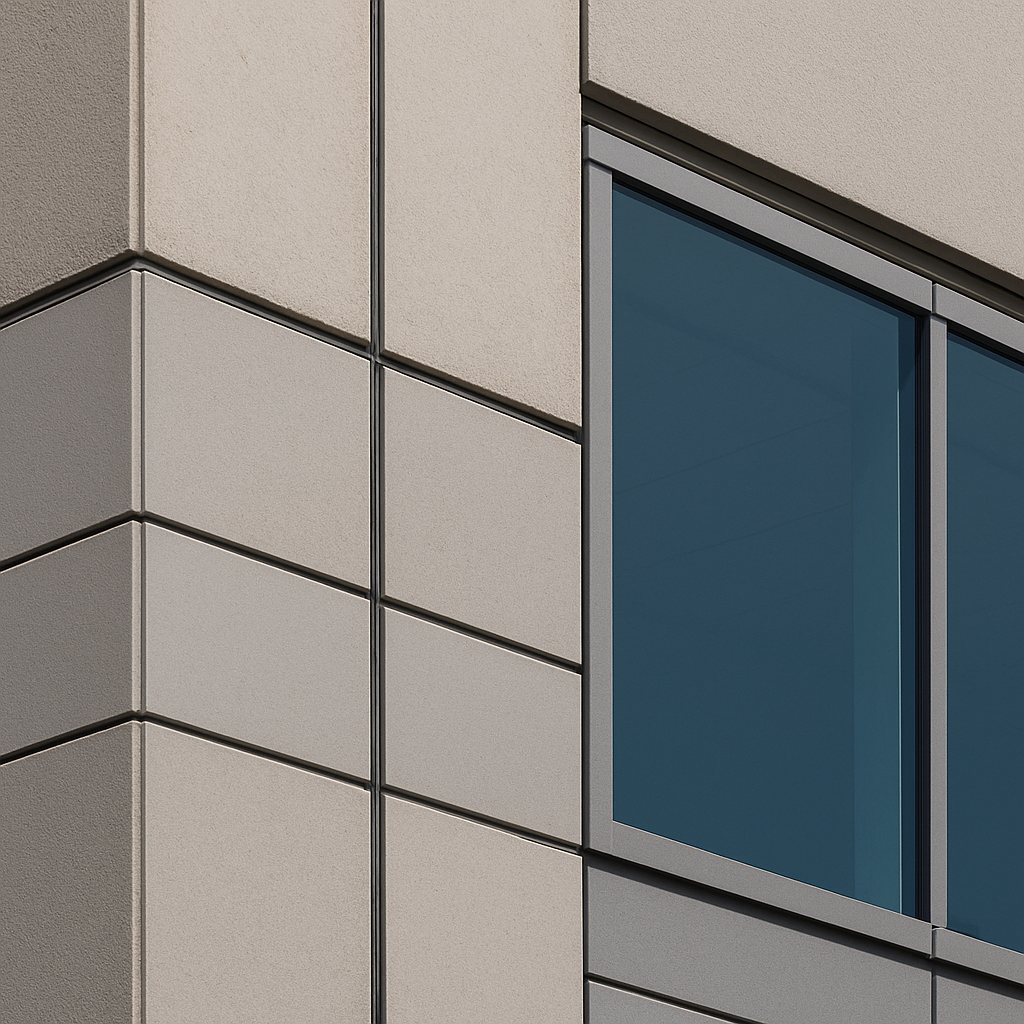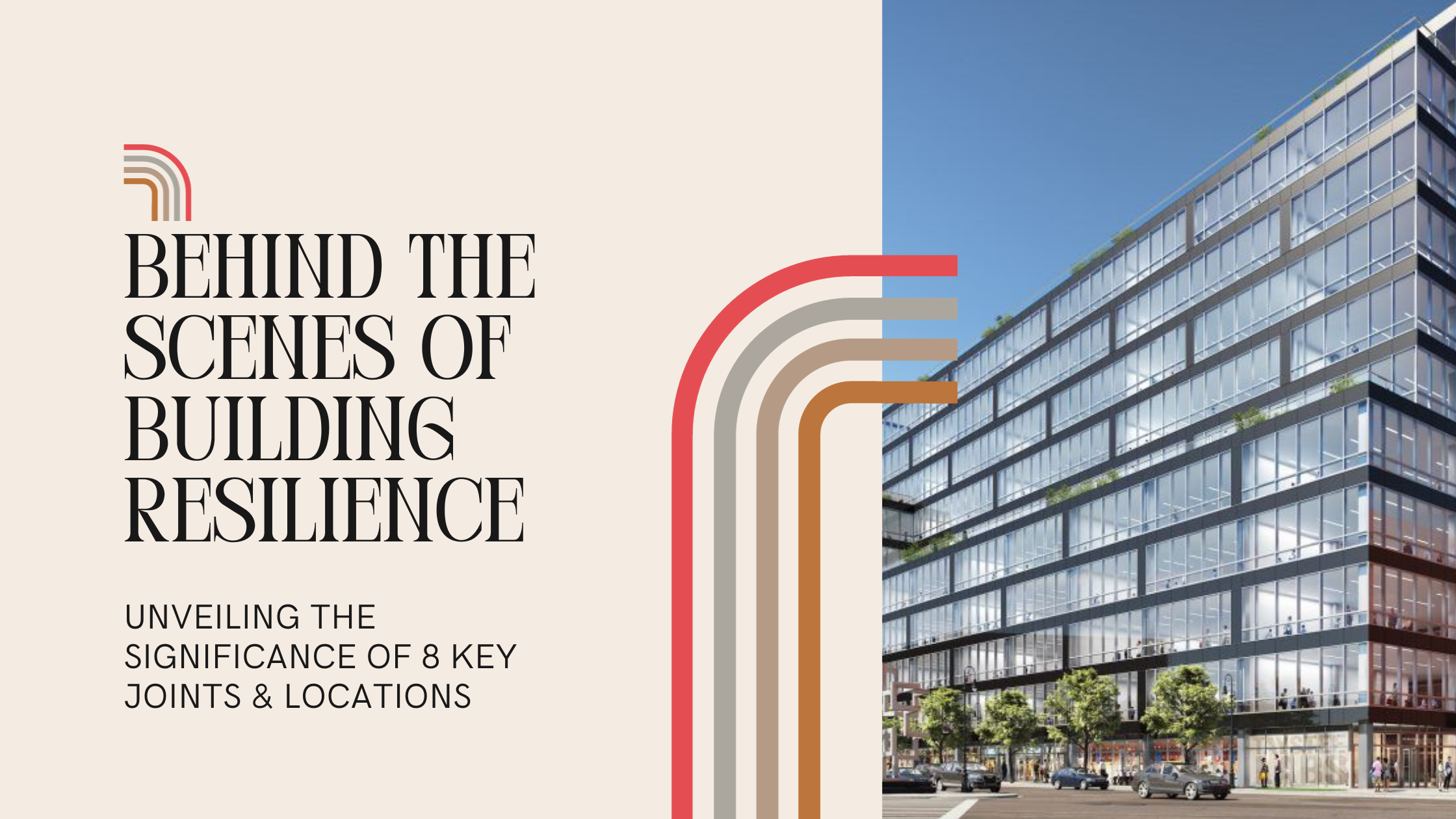Safeguarding The Building Envelope: The Role of Expansion Joints in Exterior Systems

Expansion joints aren’t just a building necessity — they’re a design superpower. When used strategically, they become one of the most powerful tools architects and builders have for ensuring both resilience and performance in the building envelope.
With thoughtful placement, smart material choices and precise detailing, expansion joints are guardians against structural stress and environmental forces.
The Role of Expansion Joints in the Building Envelope
Expansion joints allow for movement in a building envelope without reducing the performance of a structure. They absorb and manage building stress caused by everything from thermal expansion and contraction to wind loads, seismic activity and long-term structural settlement.
On the exterior, expansion joints help protect cladding, roofing and windows, as well as keep air and water barriers intact. Without expansion joints, these natural movements can create cracking, warping, water intrusion and even building failure.
On walls, roofs and foundations, expansion joints are strategically placed to absorb shifts. They’re also carefully integrated around windows, doors and other openings to keep everything sealed and secure.
By allowing the building to move, expansion joints safeguard the entire building envelope and ensure its longevity.
Integration of Expansion Joints with Exterior Systems
Expansion joints are just as important to the exterior system of a building as they are to the interior system, but this is commonly overlooked. Let’s take a look at the impact of expansion joints on the outside.
Roofing Systems
Roofs are a movement-sensitive building component that are constantly exposed to temperature swings, wind pressure and long-term structural shifts.
To help with this, expansion joints divide large areas of roof into smaller individual sections that can expand and contract independently. Joints are placed to match the building’s structure, drainage and openings so the roof can move without losing its protection.
Uncontrolled movement at the roof level often causes cracks in the membrane, flashing failure or separation at parapets — these issues can all lead to water intrusion.
When installed correctly, roof expansion joints create a watertight seal that moves with the building. This prevents leaks, safeguards insulation and extends the roof’s life.
Air Barrier Systems
A continuous air barrier is key to a building’s durability, but it can be easily damaged when the structure moves. Air leaks can cause moisture infiltration, decreased indoor comfort, poor air quality and increased energy costs.
Expansion joints give the air barrier room to flex. Pair it with the right membranes and sealants, and you’ll stop air leaks when the building shifts or faces stress.
By keeping the building envelope airtight, you reduce unwanted infiltration, improve HVAC performance, elevate indoor comfort and increase energy efficiency.
Waterproofing Systems
The most vulnerable point on a building for water intrusion is where the roof meets the exterior walls.
Expansion joints are a frontline defense for protecting a building from moisture-related damage. Properly designed expansion joints at these points can stop water and redirect it so it doesn’t get inside the building’s envelope.
If water enters the structure, it can reach reinforced steel, concrete and other load-bearing components. Over time, this leads to corrosion, spalling and structural weakness.
By maintaining a reliable waterproof barrier, expansion joints help preserve the strength and lifespan of the structure. This, in turn, keeps maintenance costs predictable and helps avoid costly or unexpected repairs.
The Importance of Consultants in Expansion Joint Integration
Working with professional consultants who have years of training and experience with the expansion joints can be the difference between a successful project and one that needs costly retrofits down the road.
Building Envelope Consultants
Building envelope consultants ensure that every exterior component works together to prevent air, water and vapor intrusion. They look at the big picture, like how the roof, walls, windows and foundations interact under movement, climate and load conditions.
Their holistic perspective is indispensable because they can show you where differential movement is most likely to occur, calculate expected displacements and recommend joint placement that balances structural needs with waterproofing.
By properly planning expansion joints across the building’s structure, they verify that the envelope has enough joints to protect key systems.
Waterproofing Consultants
Waterproofing consultants are responsible for making sure that expansion joints integrate seamlessly with the overall waterproofing system of a building. They check that high-risk areas like roof-to-wall connections, podium slabs and below-ground zones have the joints needed to resist water infiltration.
Waterproofing consultants also make sure joints work with membranes, coatings and sealants, checking that all edges and overlaps stay sealed, even when the building moves or faces water pressure.
Partnering with a waterproofing consultant can help avoid costly failures and keep the building’s moisture barrier strong for years to come.
Coordination of Systems
System coordination means that all the building’s systems are working in harmony. If these systems don’t work together, expansion joints can develop gaps that let in air, heat or water.
Careful design and expert input ensure joints move with the building while keeping the insulation, air barrier and waterproofing intact.
Why Expansion Joints Are Often Overlooked
Even though expansion joints are an essential part of building design, they’re often overlooked during the planning and construction phases of a building. Expansion joints may not be flashy, but they’re a hard-working element that’s fundamental to structural safety and durability, especially in extreme weather.
In the design phase, expansion joints can be put off due to tight schedules, limited coordination between teams or poor communication between contractors. There’s also sometimes an assumption that joints are a minor detail rather than a critical system.
Cost pressures can also lead teams to reduce the number of joints or simplify details without fully considering the implications.
If installation isn’t carefully managed, joints can end up too small, in the wrong place or not properly connected to nearby building systems — all issues that can lead to major performance failures.
Best Practices for Including Expansion Joints in Building Envelope Design
Following best practices for the placement, design and coordination of expansion joints will ensure that a building envelope stays durable, watertight and energy-efficient for the long run.
Here are three main considerations to keep in mind for a successful installation:
Sizing and Placement
Proper sizing and placement of expansion joints begins with accurately assessing the building’s anticipated movement from thermal changes, structural loading and material shrinkage.
The expansion joints used must be wide enough to handle the maximum expected displacement without overstressing the sealant or nearby materials. They should also be spaced to match the structure’s shape and movement patterns.
Additionally, the placement of expansion joints at key transitions is extremely important. These include roof-to-wall junctions, long wall runs, changes in building height and areas with differing structural movement.
Always follow manufacturer guidelines for installation and consult with experts in structural calculations.
Material Selection
To choose the right expansion joint material, you’ll need to consider environmental factors, structural demands and system compatibility. Below are general guidelines for common conditions:
- Harsh Climates: Rely on UV/weather-resistant sealants or joint covers to prevent premature wear.
- High-Moisture Conditions: Utilize watertight and chemically resistant expansion joint materials.
- Load-Bearing Areas: Podium slabs or parking decks should have reinforced joints to withstand high loads without failing.
Whatever expansion joint materials you choose, they need to be compatible with waterproofing, air barriers and insulation to maintain the continuity of the envelope.
Sealing and Maintenance
Even a well-placed joint can fail if the sealant is incorrectly applied, undersized or incompatible with adjoining materials.
Proper joint preparation should always include cleaning, priming and installing the correct backer rod depth. That will allow the sealant to flex without tearing or detaching under movement.
Regular inspection and maintenance are equally important to the long-term performance of expansion joints. Over time, exposure to UV light, temperature and building movement can cause sealants and joint materials to degrade, crack or lose adhesion.
If you don’t look out for issues, small problems can go unnoticed and turn into costly repairs.
Expertise Made Easy With Nystrom
Expansion joints are critical to managing movement and stress within the building envelope. When properly integrated, they contribute significantly to both resilience and efficiency.
However, not all expansion joints are made equally — you need solutions that are proven to perform. At Nystrom, our products are specifically made to support the needs of architects and contractors.
With fast responses, timely delivery and on-site assistance, our customer-focused team is ready to help you choose the perfect solutions for a building envelope that lasts.
Explore our expansion joint products and reach out with any questions — let’s make sure your project stands strong for years to come.


